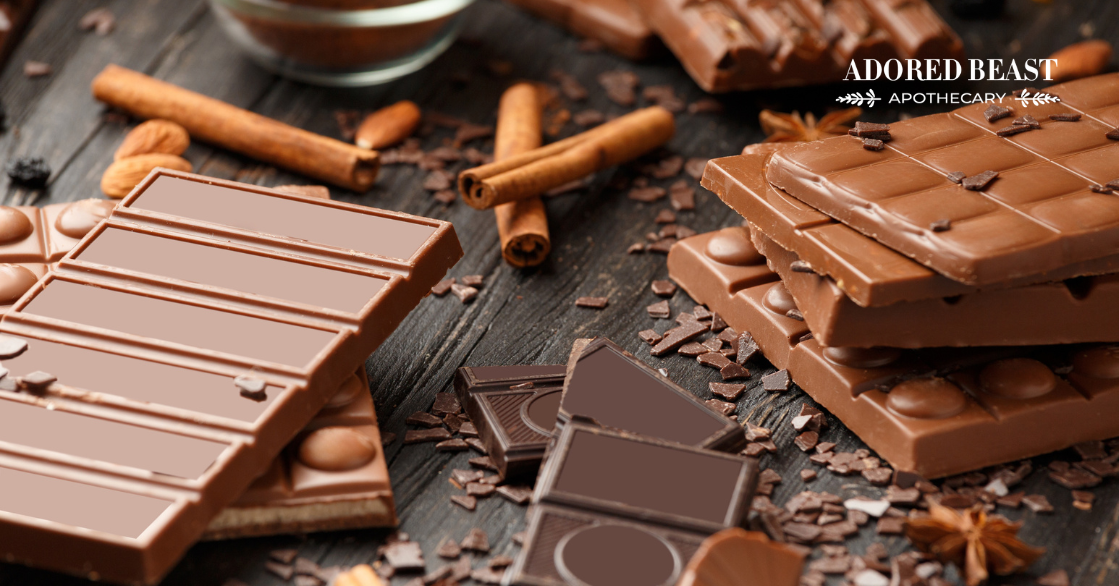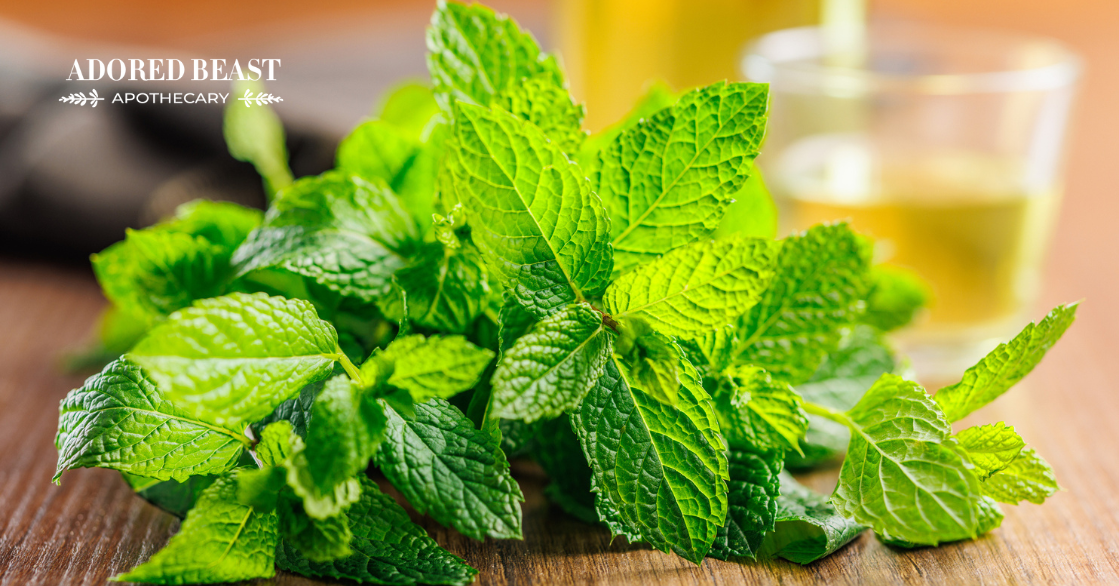When it comes to the foods that dogs shouldn’t eat, a few top the list as typical “no-gos”…
And probably the most well-known is chocolate. Chocolate may be a heavenly treat for us, but for our furry friends, not so much.
Unfortunately, dogs don’t always get the memo and might sneakily indulge in a chocolate delight when we’re not looking. When we were young, our family dog rooted through the bags in our parents’ closet and ate every piece of chocolate from the holiday stockings! (She was fine, don’t worry – but it was not a fun experience!)
So, do you know what to do if your dog eats chocolate? Let’s break it down.
Identifying the Culprit: Which Chocolates are Harmful?
First things first, not all chocolates are created equal in terms of danger for dogs. The danger lies in the theobromine, the main chemical in chocolate that is toxic for dogs.
Chocolate also contains caffeine. The amount is usually quite small, but still, it is not advised for our canine companions.
When you combine these two elements – the theobromine and the caffeine – it can speed up the heart rate and stimulate the nervous system. That’s not something we want for our dogs.
Dark chocolate and baking chocolate are the biggest troublemakers due to their higher cocoa content. These contain anywhere from 150 to 390 mg of theobromine per ounce. Milk chocolate has less cocoa and is therefore less toxic, but it can still cause issues in large amounts. Typically, it contains around 44 mg of theobromine per ounce. And white chocolate, even though it isn’t even technically chocolate, contains about 0.25 mg of theobromine per ounce.
So, in general, the darker and more bitter the chocolate, the greater the danger.
Here’s a rough guide:
- Dark Chocolate: Highly toxic. Even small amounts can be dangerous.
- Baking Chocolate: Extremely potent. A small quantity can lead to severe issues.
- Milk Chocolate: Less toxic, but large amounts can still cause problems.
- White Chocolate: The least toxic, but still not shareable.
These are the chocolates that contain the highest amounts of theobromine, just to give you a better idea of average amounts:
- Unsweetened baking chocolate, liquid: 447mg per 1oz
- Unsweetened baking chocolate: 376mg per 1oz
- 70-85% dark chocolate: 228mg per 1oz
- 60-69% dark chocolate: 179mg per 1oz
- Hot cocoa: 170mg per cup
- Dark chocolate covered coffee beans: 147mg per 1oz
- Cocoa powder: 142mg per tbsp
- 45-59% dark chocolate: 140mg per 1oz
- Semi-sweet chocolate chips: 138mg per 1oz
- Chocolate wafers: 21mg per wafer
What to Do if Your Dog Eats Chocolate
So, what do you need to know when it comes to what to do if your dog eats chocolate?
We’ll start by saying that, thankfully, it’s rarely fatal, so don’t panic.
That said, it can result in illness, discomfort, and/or distress, especially if a large amount is consumed. So, knowing that, the first step is to try to figure out:
- Note what kind of chocolate it was (dark, milk, etc.)
- The amount your dog ate
This info will be crucial for determining your next steps.
According to the American Kennel Club, “in general, mild symptoms of chocolate toxicity occur when a dog consumes 20 mg of methylxanthines (including theobromine and caffeine) per kilogram of body weight.”
You can quickly calculate your dog’s risk of toxicity with this chocolate toxicity calculator.
In general, a very concerning amount of chocolate for a dog is about once ounce of milk chocolate per pound of body weight. That’s less than the average milk chocolate bar, so consuming even one chocolate bar can have serious consequences, especially for small dogs.
At the same time, watch for signs of toxicity:
- Any signs of discomfort
- Vomiting
- Diarrhea
- Increased heart rate
- Restlessness or hyperactivity
- Tremors or seizures
- Muscle rigidity
When it comes to what to do if your dog eats chocolate, it’s always better to err on the side of caution. If the amount your dog ate is concerning, you notice any signs or symptoms, or if you’re just worried at all, never hesitate to call your trustedveterinarian. Provide them with the details about the type and amount of chocolate, as well as your dog’s size, breed, and medical history. They’ll be able to give you advice on what to do (and that advice may be going into the clinic).
Holistic Approaches to Help
While consulting your vet is essential, some holistic approaches may help in addition to medical care. That said, we recommend doing these only with your vet’s guidance.
- Activated Charcoal: Can bind to the toxins in the stomach and limit absorption.
- 3% Hydrogen peroxide: Can be used to induce vomiting.
These are safe to do on your own:
- Hydration: Encourage your dog to drink water to help flush out toxins.
- Ginger Tea: A small amount of ginger tea (without additives like sugar) can help soothe the stomach.
Probiotics can help to rebalance the gut after the chocolate escapade is over and your dog is back to their old self. The specific herbs and nutraceuticals in our Gut Soothe can be very calming for the digestive tract in this case!
**Note: You may have seen commercial dog treats out there that look like they contain chocolate. Maybe they even use a play on chocolate in the name. Don’t fret – read the ingredients and you’ll probably see “carob” listed. Carob looks similar to chocolate and the two are often confused. It’s safe to feed.
For such a seemingly benign treat, chocolate can be a big issue for our beloved beasts. Especially around the holidays, you want to be sure to always keep it out of reach. There are lots of other lovely – and healthy – food items we can share.












